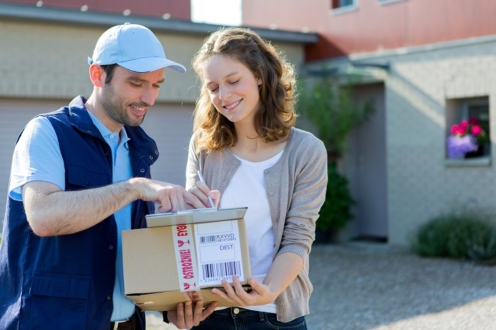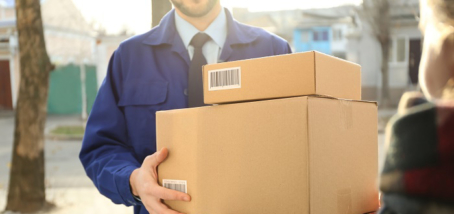-
ROSSLARE EUROPORT TARGETS HEALTH & SAFETY WITH CAMERA TELEMATICS PARTNERSHIP - 2 days ago
-
Landmark Study Reveals Wearable Robotics Significantly Boost Safety and Efficiency in Industrial Environments - July 24, 2024
-
Visku Tackle The Retail Seasonality Challenge One Pallet At A Time - July 22, 2024
-
KAMMAC AND BERGEN LOGISTICS STRENGTHEN FASHION & LIFESTYLE SERVICES IN THE UK - July 19, 2024
-
TENTBOX EXTENDS PARTNERSHIP WITH ARROWXL TO SUPPORT INCREASING DEMAND - July 17, 2024
-
The Perfume Shop improves customer journeys while driving profitability in partnership with Scurri - July 17, 2024
-
ZEROMISSION SECURES £2.3M ($3M) INVESTMENT TO ACCELERATE ELECTRIC FLEETS - July 16, 2024
-
BCMPA CELEBRATES SUCCESS OF 2024 CONFERENCE - July 15, 2024
-
Best of the Best: Jungheinrich Celebrates Triple International Award Win - July 12, 2024
-
GOPLASTICPALLETS.COM CALLS ON NEW CHANCELLOR RACHEL REEVES TO CONSIDER PLASTIC PACKAGING TAX REFORM - July 10, 2024
Kushal Nahata, CEO & Co-founder, FarEye
Nationwide lockdowns and restrictions in many countries during the coronavirus pandemic have triggered huge disruptions in supply chains. More than ever retailers and online delivery operators have a crucial role to play when it comes to serving society, especially those badly affected by the crisis. It’s a herculean task and demands that businesses introduce major changes in their supply chain operations.

With consumers advised to stay in their homes, online deliveries have become the safest and most convenient way to buy food and other essentials. This has led to an unprecedented surge in demand for online deliveries with panic buying initially helping to fuel this demand.
Figures from Quartz show that since 9 March there has been a big increase in the demand for drivers and resources to support this, including a 78% increase in food delivery and 15% increase in package delivery. Some UK supermarkets announced hiring sprees, including Tesco, which added 200 vans to its fleet and hired thousands of new drivers to help grow its home delivery business.
Some have turned to partnering such as Marks & Spencer, which has partnered with Deliveroo to deliver around 60 M&S essentials. While others are still struggling with demand. Online retailer Ocado temporarily suspended its food delivery service saying it cannot meet demand. In Australia, Coles’ delivery windows were closed for a week in areas of Melbourne and Sydney, with the website automatically prompting consumers to select ‘click & collect’ if they wanted groceries sooner.
Now, more than ever, efficiency of supply chains will determine how well businesses are coping up with the ongoing pandemic.
5 ways to bring supply chain and delivery operations up to speed:
1. Leverage crowdsourcing capabilities
To meet such unprecedented demand for home deliveries, businesses must optimise key assets such as staff and vehicle capacity. They can leverage advanced crowdsourcing technologies to optimise staff capacity by onboarding temporary or part-time delivery staff from across delivery provider ecosystems.

2. Ensure contactless payment and deliveries
As ‘social distancing’ becomes the new normal, retailers should provide contactless or “tap-and-go” payment options, eliminating cash transactions. Businesses also need to follow ‘leave at door’ deliveries guidelines. Deliveries should be made flexible by allowing customers to choose where a particular order should be placed and when.
3. Implement real-time dynamic routing
Businesses should introduce real-time and dynamic routing capabilities to maximise staff-vehicle utilisation capacity. Such capabilities not only increase delivery productivity and reduce the cost of fuel consumption, but also ensure businesses can efficiently plan multiple drops on a particular delivery route. Businesses should ensure the needs of vulnerable people are met as a priority. Hence, it’s crucial to develop capabilities that allow emergency collections and deliveries while a driver is out on the road.
4. Control price and reduce promotions
Increasing the price of essentials to manage margins will lead to high levels of customer disappointment, negative media coverage and potential fines. Fortunately, most retailers are shrinking their margins further to keep the prices of essential commodities the same. Retailers need to introduce additional layers of control to ensure prices do not increase even by mistake. Brands should also avoid promotions, which can result in an increase in demand and pressure on manpower. This provides an opportunity to shift investments in promotions to more vulnerable areas like operations, inventory and last-mile delivery.
5. Onboard new platforms remotely
If businesses are willing to invest in new technologies to ensure rapid scalability, they should look for platforms with short go-live cycles and can be implemented remotely without physical intervention.
FarEye is a logistics SaaS platform for predictive visibility. It enables brands to orchestrate, track, and optimise their logistics operations. For more information visit www.getfareye.com

































